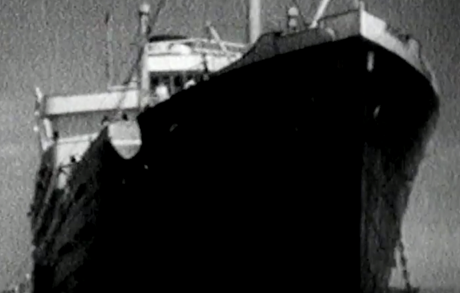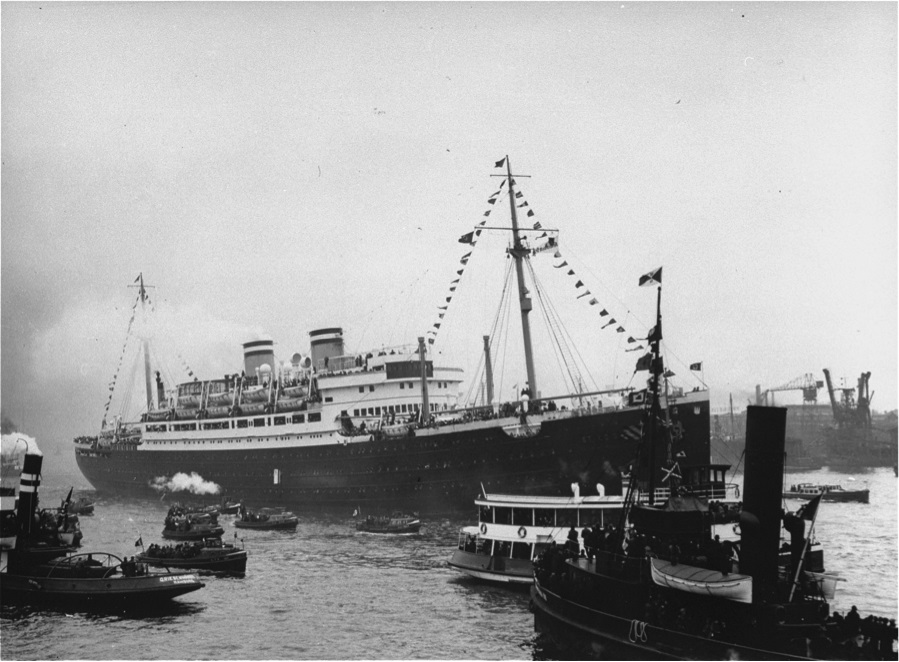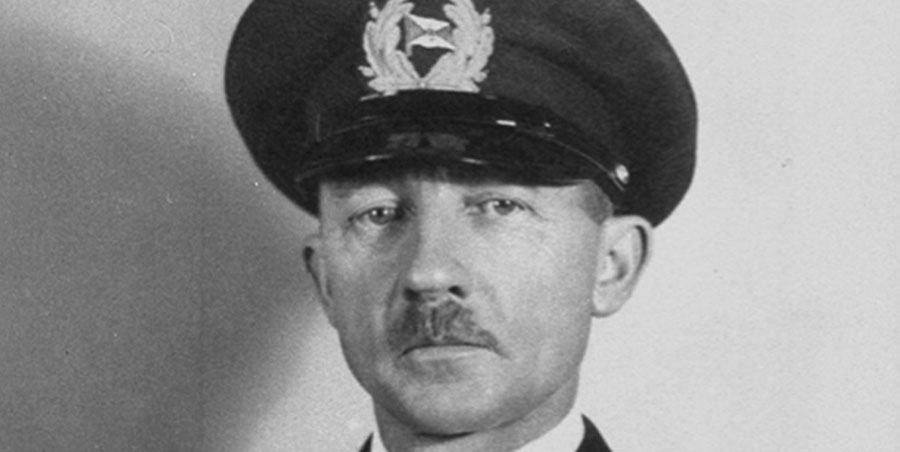Educator Tools

 Ask yourself:
Ask yourself:
- For several months in the summer of 1939, the voyage of the MS St. Louis, carrying more than 900 Jewish refugees fleeing Nazi Germany, caught the attention of the world. Did Canada have a reputation as a welcoming place for those fleeing oppression?
- What hardships did they face and how were they treated when they arrived on our shores?
- Why did our government react the way it did?
Here Are The Facts
The St. Louis Voyage
During the 1930s, leaving Germany was still an option for the Jewish population, but who would take them in? The St. Louis was a German ship carrying 930 Jewish refugees from Nazi Germany to Cuba. When the ship set sail from Hamburg on May 13, 1939, all of its refugee passengers had legitimate landing certificates for Cuba.
Here is a photo of the MS St. Louis in the harbour of Havana, Cuba. Are the boats surrounding the St. Louis there to welcome the refugees? Read on to find out.
During the two-week voyage to Havana, the landing certificates were invalidated by the pro-fascist Cuban government. When the St. Louis arrived in Havana on May 27, only 22 Jewish refugees were allowed entry. The refugees were also refused entry into the United States. The St. Louis was within two days of Halifax Harbour when Ottawa, under pressure from high-ranking politicians within, refused to grant the Jewish families a home. On June 6, the ship was forced to return to Europe before its supply of food and water ran out. While en route to Antwerp, several European countries agreed to take in the refugees (287 to Great Britain; 214 to Belgium; 224 to France; 181 to the Netherlands). Those who went to Belgium, France, and the Netherlands were soon trapped as Hitler’s armies invaded Western Europe and they perished as victims of the Nazi Final Solution.
Where Was Canada During This Event?
 Artifact
Artifact
Artifact 1 › Here is a description from a noted book about the history of the 1930s:
None of the city’s [Winnipeg during the 1920s and 1930s] chartered banks, trust companies, or insurance companies would knowingly hire a Jew, and anyone with a Ukrainian or Polish name had almost no chance of employment except rough manual labour. The oil companies, banks, mortgage companies, financial and stockbrokers, and most retail and mercantile companies except the Hudson’s Bay Company, discriminated against all non-Anglo-Saxons.
Ours was a society with a well-defined pecking order of prejudice. On the top were the race-proud Anglo-Saxons, who were prejudiced against everybody else. On the bottom were the Jews, against whom everybody discriminated. In between were the Slavs and Germans. By the mid-thirties the Germans had become deeply infected with Hitler’s position and discriminated against Ukrainians, Poles and Jews.
James H. Gray, The Winter Years (Toronto, Macmillan, 1966), 127, 133.
ACTION 1
Think
Prejudice in Canada
Was this prejudice limited to Winnipeg? Examine the above and draw your conclusions.
 Artifacts
Artifacts
Here are two quotes from F. C. Blair, Director, Immigration Branch of the Department of Mines and Resources, 1938, who advised the government on policy.
Artifact 1 ›
Ever since the war, efforts have been made by groups and individuals to get refugees into Canada but we have fought all along to protect ourselves against the admission of such stateless persons without passports, for the reason that coming out of the maelstrom of war, some of them are liable to go on the rocks and when they become public charges, we have to keep them for the balance of their lives.
Canadian Council for Refugees website, Entry for March 1938
Artifact 2 ›
Pressure on the part of the Jewish people to get into Canada has never been greater than it is now and I am glad to be able to add, after thirty-five years experience here, that it was never so well controlled.
Frederick Blair, Canada’s top immigration bureaucrat. Franca Iacovetta, Paula Draper, Robert Ventrsca, eds., Nation of Immigrants: Women, Workers, and Communities in Canadian History, 1840s-1960s (Toronto: University of Toronto, 2022), 417.
Blair raised the amount of money immigrants had to possess to come to Canada from $5,000 to $15,000. As well, immigrants had to prove they were farmers, which Blair hoped would further sift out the Jewish applicants, as most were coming from cities. Blair followed the immigration regulations—he wrote many of these—to the letter and then boasted about his success in keeping Jews out of the country.
ACTION 2
Do
Jewish Refugees
What does the following table say about Blair’s boast?
| Countries Admitting Jewish Refugees 1933-1945 | Approximate Number of Jewish Refugees |
|---|---|
| United States | 240,000 |
| Great Britain | 85,000 |
| China | 25,000 |
| Argentina | 25,000 |
| Brazil | 25,000 |
| Columbia and Mexico (combined) | 40,000 |
| Canada | Fewer than 5,000 |
A. There were groups and organizations in Canada who protested, but their voices were not heard. Why were they unsuccessful in changing government policy?
B. Did you know that the captain of the St. Louis, Gustav Schroeder, insisted that the passengers be treated with respect though he was loyal to the German state?
He also negotiated with other countries in Western Europe to take some of the passengers. He never commanded another vessel.
C. During and after the war, Schroeder struggled to make a living. Grateful families of the survivors of the St. Louis helped him and his family after the war. In 1957, the West German government honoured Schroeder for having saved Jewish lives. After his death in 1959, the State of Israel honoured him as Righteous Among the Nations in March 1993.
Should we honour people who did things in the past for the betterment of humanity?
Apology For Past Wrongs
Apology in the House of Commons, November 7, 2018
Prime Minister Justin Trudeau issued a formal apology for the Canadian government’s treatment of the refugees on the MS St. Louis.
The Community Historical Recognition Program
Among their initiatives, the Government of Canada established the Community Historical Recognition Program. Established for Canadian communities that were affected by immigration restrictions and wartime measures, this program acknowledges the unjust chapters of Canada’s history in ways that are meaningful to the communities concerned. This included the Chinese-Canadian community for the Head Tax policy. (See Voices into Action IV.4 Chinese Immigration) Another immigration event involved the Komagata Maru, a ship bringing 376 Indians to Canada in 1914 but was turned away by a discriminatory immigration policy that was in place at that time. Upon arrival back in India, at least 20 of the individuals on board were killed by British troops. The incident has long been a source of grievance for the Indo-Canadian community. (See Voices into Action III.2 The Komagata Maru Incident)
Funding was also made available to commemorate the St. Louis incident as well as other past events considered to have wronged groups of Canadian immigrants.
- Should we apologize for the mistakes we as a country have made? Under what circumstances?
- Is there a place for “moral judgments” in history?
- What lessons can history teach us, if any?
A Cruel Irony
Canada did in fact admit some Jewish refugees during WWII. There were 2,500 male Jews from Germany who were considered “potentially dangerous enemy aliens” as Germans and they were were brought to Canada and interned by Britain. They were housed in high security camps in Quebec, Ontario, and New Brunswick. In 1945, they were reclassified as “interned refugees (Friendly Aliens)” and 972 accepted an offer to become Canadian citizens.
Going Further
Explore the holdings of the United States Holocaust Memorial Museum on The St. Louis. Information is provided on every passenger as well as other details.
The Internment of Jewish Refugees in Canada 1940-43 is an online exhibit created by the Vancouver Holocaust Education Centre.
Further reading
Kathy Kacer, Shanghai Escape, 2013
While most countries were not willing to give refuge to Jews, Shanghai was one place that did. More than 200,000 European Jews made a life there. Lily Toufar who escaped from Vienna is one story.
Irving Abella and Harold Troper, None is Too Many: Canada and the Jews of Europe 1933-1948 (Toronto: University of Toronto Press, 1983). A history of the Canadian government’s policies toward Jewish refugees fleeing Germany before and during the Holocaust.
Every effort has been made to gain permission from copyright holders to reproduce borrowed material. The publishers apologize for any errors and will be pleased to rectify them in subsequent reprints and website programming
Educator Tools




